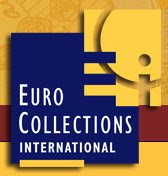
Tuvalu 2009 $1 First Australian Flight Centenary 1oz Silver Proof
Some background information about this important moment in history taken from Downies advertising material:
For a nation built on the pioneering spirit, Australia’s rich, extraordinary history in the field of aviation should come as no surprise.
The intrepid balloonists of the 19th century; the highly influential work of Lawrence Hargrave, known as the ‘Father of Australian Aviation’; the first powered flight in Australia by master escapologist Harry Houdini in 1910; the strong tradition of aircraft development from WWI on; the legendary ‘long distance flights’ of those such as Charles Kingsford Smith, Charles Ulm and Bert Hinkler; Australia’s first astronaut, Philip K. Chapman…Australia has long been at the forefront of humanity’s efforts to take to the skies. Whilst his name may not be quite as well known as those of his fellow pioneers, George Augustine Taylor played a key role in the development of Australian aviation.
A quiet, determined man, Taylor was a passionate proponent of Australian aviation at the turn of the 20th century. The power behind the Aerial League of Australia, Taylor was inspired by the revolutionary work of the aforementioned Lawrence Hargrave in the late 19th century. Taylor had assisted Hargrave with some of his later experiments, and the glider Taylor designed, built and then piloted at Narrabeen in December 1909 was influenced substantially by Hargrave’s famous box kites. Successfully employing Hargrave’s theories, Taylor made history in December 1909, by taking to the air above Narrabeen beach in his box kite wing construction – the fi rst ever controlled flight in a ‘heavier-than-air’ craft in Australia. Piloted by Taylor and his colleagues, Charles Schultz and Edward Hallstrom, the glider flew 29 times over the course of the day – including a flight each by Taylor’s wife Florence and Schultz’s wife Emma. Another in the series of ‘firsts’ connected with this landmark event, Florence Taylor’s brief flight saw her become the first woman to fly in Australia.
Building the first aeroplane factory in Australia, creating the first organisation devoted to Australian aviation (the Aerial League of Australia) – and launching the first Australian aeronautical lawsuit! – Taylor was a true Aussie pioneer. Exactly one hundred years after his greatest triumph, over the sandhills of Narrabeen, we salute ‘the first man in Australian skies’.
On the reverse is a portrait of George Taylor, with the sandhills of Narrabeen in the background. Soaring over the hills is George on the box kite-styled glider, with the inscription "Heavier Than Air" above that. At the top is the anniversary inscription and years "First Australian Flight - 1909-2009". The obverse carries an effigy of Her Majesty Queen Elizabeth II, with the country and year of issue, together with the face value, inscribed around the bottom rim.
Given the exclusive nature of this coin and the worldwide demand for coins with an aviation theme a sell-out is assured. Be one of the lucky few to own this stunning commemorative by visiting our Tuvalu 2009 $1 First Australian Flight Centenary 1oz Silver Proof page at Euro Collections International.
To be kept informed on new releases as they arrive you can follow ECI on Twitter and get up-to-the-second notifications of the latest products to be on offer, or alternatively you can visit our What's New page for a run down of recent additions to the site.










